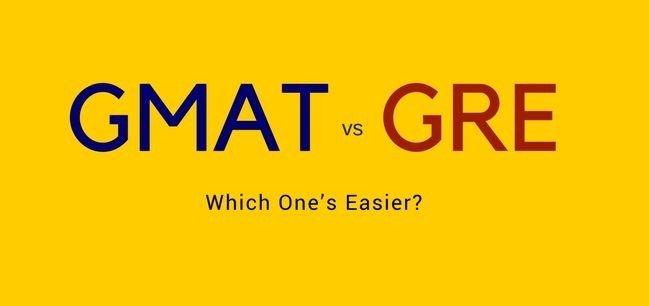
Many business schools accept both GMAT and GRE test scores as part of their admission requirements. Learn the differences between both exams to decide which one is best for you. When applying for graduate program, you may notice that many schools request test scores as part of their admission requirements. Often, you’ll have the option to submit either your Graduation Management Admission Test (GMAT) score or your Graduate Record Examination (GRE) score. So, first lets know about these exams in details.
What is GMAT?
The GMAT, admission by the Graduate Management Admission Council (GMAC), is an entrance exam widely used for admission to business schools and MBA programs. The exam measures reasoning and critical thinking skills meant to demonstrate an ability to succeed in top graduate business programs.
You can retake the GMAT at a testing center up to five times in a rolling 12-month period. Not more than 8 times. For the GMAT online exam, you can retest once.
GMAT Pattern
The GMAT format depends on whether you are taking the test at a testing center or online. The in-person version comprises of four sections, and you can choose to order the sections in one of three ways to best fit your strengths and testing style.
Analytical Writing :
This section of the exam asks you to analyze and write a critique of a given argument in one 30-minute writing task. It is scored from zero to six points in half-point increments.
Integrated reasoning:
The Integrated Reasoning section (not found on the GRE) tests your ability to use data to solve complex problems. This portion includes one 30-minutes section with 12 questions (mostly multiple choice). You’ll be asked to examine examine and analyze data from multiple sources, including tables and graphs, as well as solve both quantitative and verbal problems. The score ranges from one to eight in one-point increments.
Quantitative:
This 62- minutes section has 31 multiple-choice questions. Questions include quantitative problems and “Data Sufficiency” problems, which ask you to determine whether you have enough data to answer a given question. You can earn six to 51 points in one point increments.
Verbal:
The verbal Reasoning section lasts 65 minutes and contains 36 questions designed to test your ability to read, understand, and evaluate written materials. The three types of questions you’ll encounter include reading comprehension, Critical reasoning, and sentence correction. The scoring is from six to 51 points in one-point increment.
You can use a basic online calculator during the integrated Reasoning section only. For the Quantitative Reasoning segment, you can use a white board (at-home testing) or a provided laminated notebook with dry erase markers (testing center) to work through problems. During the GMAT, you cannot skip and return to questions or change your answers.
What is the GRE?
The GRE comprises of three scored portions, as well as a possible unscored or experimental section. The Analytical Writing section will always come first, but you won’t know the order of the remaining sections or which section is unscored.
Analytical writing:
This section has two separately-timed, 30-minute writing tasks. You’ll be asked to construct your own argument on an issue and evaluate someone else’s argument on an issue. This sections scoring is from 0 to 6 in half-point increment.
Verbal Reasoning:
The Verbal Reasoning test comprises of two 30-minute sections with 20 questions each. You’ll encounter three types of questions in this section: reading comprehension, text completion, and sentence equivalence. You can get a score of 130 to 170 in one-point increments.
Quantitative Reasoning:
This portion of the exam, designed to test your basic math skills, features two 35-minute sections with 20 questions each. Questions might be multiple choice with one or several answers, numeric entry questions, or quantitative comparison questions. Topic include arithmetic, algebra, geometry, and data analysis. You can get a score of 130 to 170 in one-point increments.
During the test, you can use an on-screen calculator during the Quantitative Reasoning section. You can move backward and forward through each section, change your answers, and mark questions for “Review” if you’d like to return to them later.
Difference between the GMAT and GRE
The major difference that creates a boundary between the GMAT and GRE is that the GMAT is typically used for business school admissions, while the GRE is accepted for most graduate programs (including business and law schools). Beyond that, the two tests have a different format with different types of questions, testing policies, and options for sending your scores to schools.

Which is easier, GMAT or GRE?
Determining which test will be easier for you will depend on your academic strengths and testing style. The quantitative section on the GRE tends to be a bit easier than its GMAT counterpart (and you get to use a calculator). The GRE section typically has more geometry, while the GMAT has more logical reasoning questions. The GRE verbal section, on the other hand, tends to feature more difficult vocabulary than the GMAT. Many test-takers consider the GMAT verbal section to be slightly easier.
Should I take the GMAT or GRE?
Although the vast majority of business school applicants choose to take the GMAT over the GRE, it’s common for business schools to accept GRE scores as part of their admissions requirements. This means you can take the test that will best highlight your own academic strengths. Here are some things to consider as you make the decision that’s right for you.
Academic goals:
If you’re considering different graduate programs or simply want to keep your options open, the GRE is accepted in a wider variety of degree programs. If you’re certain about business school, taking the GMAT is a way to demonstrate your commitment.
School requirements:
Many schools accept either score, but it’s a good idea to verify admissions requirements ahead of time. If possible, speak to an admissions representative to ask whether they have a preference between the two tests.
Academic strengths:
If your math skills tend to be stronger than your verbal skills, the GMAT might offer a better opportunity to show off those strengths. If you’re a strong writer, consider the GRE. Due to the vocabulary involved, the GRE can sometimes be more challenging for non-native English speakers.
Testing style:
If you like to skip around and go back over your answers, the GRE format allows you to do so. This might give some test takers a greater sense of confidence.
Practice exam performance:
One way to determine which test you’re best suited for is to take a practice test for each. Take them separately under circumstances as close to the real thing as possible. Once you take and score your exams, you’ll have a better idea of which you feel more comfortable with.
Score reporting:
If you take the GRE exam more than once, you can choose which scores you send to prospective schools. For the GMAT, schools receive all your scores. Many programs only consider the highest score.
Career goals:
Some companies, particularly investment and business consulting firms, ask for GMAT scores as part of the job application process. If you have certain target employers in mind, research these requirements ahead of time. Taking the GMAT before business school could spare you from having to take it during your job search.

